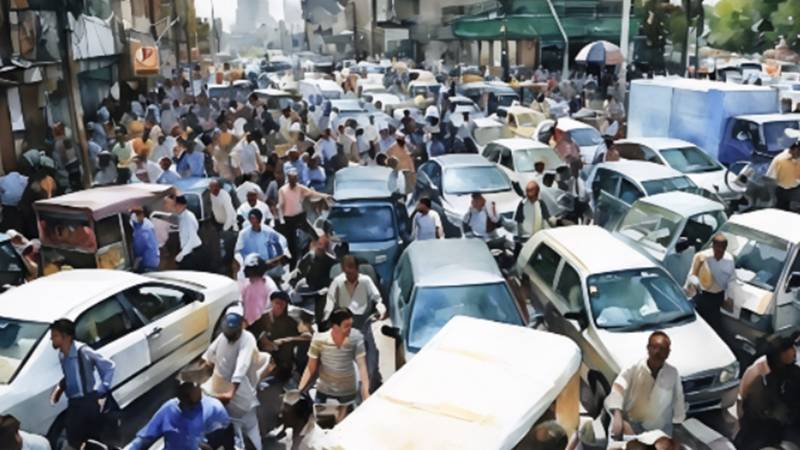
Urbanisation in Pakistan has grown at an unprecedented rate in recent decades, transforming the country’s cities into sprawling megacities. Karachi, Lahore, Islamabad, and other urban hubs are rapidly expanding as people flock to cities in search of better jobs, education, and healthcare. However, this fast-paced urbanisation has created significant challenges, particularly in housing and infrastructure, that require urgent attention.
Housing crisis in the making
Pakistan’s urban population has been growing at a rate of around 3% annually, one of the highest in South Asia. According to estimates from the Pakistan Bureau of Statistics, nearly 40% of Pakistan’s population now lives in urban areas. Unfortunately, this rapid urbanisation has outpaced the capacity of cities to provide adequate housing.
In cities like Karachi and Lahore, the demand for housing far exceeds the supply. This has led to an alarming rise in informal settlements, commonly known as katchi abadis, where millions of people live without access to basic amenities such as clean water, electricity, and sanitation. The World Bank estimates that around 30% of Pakistan’s urban population lives in such informal settlements, highlighting the gravity of the housing shortage.
The formal housing market is plagued by rising property prices, making homeownership unaffordable for most middle- and lower-income families. In Karachi, for instance, property prices have skyrocketed over the past decade, driven by speculation and a lack of regulation in the real estate sector. For many residents, renting is the only option, but even that is becoming increasingly expensive.
Moreover, Pakistan’s housing deficit is projected to worsen in the coming years if current trends continue. According to a report by the State Bank of Pakistan, the country faces a housing shortfall of over 10 million units. Without significant intervention, this gap will only grow wider, leading to more overcrowding, homelessness, and the proliferation of informal settlements.
While Islamabad was initially planned as a well-structured city, the rapid population growth has led to the unplanned expansion of peripheral areas, creating problems in the delivery of essential services
Inadequate infrastructure: a strain on city life
While housing is a critical issue, it is closely tied to the broader problem of inadequate urban infrastructure. Pakistan’s cities are struggling to cope with the increasing demands placed on them by their swelling populations. Roads, public transport, sewage systems, and utilities are all under severe strain.
Take Karachi, the country’s largest city, as a prime example. With an estimated population of over 16 million, Karachi faces chronic traffic congestion, unreliable electricity, and frequent water shortages. The city’s public transport system is woefully inadequate, forcing many residents to rely on private vehicles or informal transport options like rickshaws and minibuses. This, in turn, exacerbates the traffic problems and contributes to rising pollution levels.
Lahore, while benefiting from a more organised public transport system through projects like the Lahore Metrobus, still grapples with similar issues. The city’s roads are congested, and the demand for basic services continues to grow. The infrastructure, particularly in older parts of the city, is unable to keep pace with the rapid urbanisation.
In Islamabad, the capital city, urban sprawl is a growing concern. While Islamabad was initially planned as a well-structured city, the rapid population growth has led to the unplanned expansion of peripheral areas, creating problems in the delivery of essential services. Water scarcity, electricity outages, and poor waste management are emerging as critical challenges in these areas.
Environmental impact: an overlooked aspect
Another often-overlooked consequence of urbanisation is its environmental impact. The expansion of cities has resulted in the destruction of green spaces, deforestation, and a sharp increase in pollution. Lahore, for example, has been ranked as one of the most polluted cities in the world, with air quality levels regularly exceeding safe limits.
Moreover, unplanned urbanisation has disrupted natural water drainage systems, contributing to the increased frequency of urban flooding. In recent years, cities like Karachi and Lahore have experienced severe flooding during monsoon seasons, leading to significant loss of life and property. This highlights the need for more climate-resilient infrastructure in Pakistan’s urban centres.
The way forward: sustainable urban development
Addressing Pakistan’s urbanisation challenges will require comprehensive planning, strong governance, and a commitment to sustainable development. The first step is to develop affordable housing solutions. Public-private partnerships can play a vital role in addressing the housing shortfall by encouraging investment in low-cost housing projects. Government-backed housing schemes, such as the Naya Pakistan Housing Program, are a step in the right direction but need to be scaled up significantly to meet the growing demand.
Investing in infrastructure development is equally critical. Expanding public transportation networks in cities like Karachi and Lahore, improving road conditions, and upgrading sewage and water systems should be priorities for local governments. In this regard, Pakistan can learn from the experiences of other rapidly urbanising countries, such as Turkey and Malaysia, which have made significant strides in urban infrastructure development.
Environmental sustainability must also be at the heart of future urban planning efforts. Introducing green building standards, protecting urban green spaces, and developing water management systems that can withstand the pressures of climate change are essential for ensuring that Pakistan’s cities remain liveable for future generations.
Finally, there is a need for better governance and urban planning. Many of Pakistan’s urban challenges are exacerbated by weak local governance, a lack of coordination between different government agencies, and the absence of long-term planning. Establishing stronger city governance structures and ensuring accountability can help improve the management of urban areas.
Pakistan’s urbanisation is both a challenge and an opportunity. If managed effectively, cities can become engines of economic growth and hubs of innovation. However, if left unchecked, the problems of housing shortages, inadequate infrastructure, and environmental degradation will continue to grow. It is imperative that policymakers, urban planners, and local governments come together to address these issues and create cities that are not just bigger, but better — where every resident has access to safe housing, reliable infrastructure, and a clean environment.

